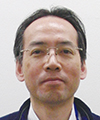 |
|||||||||||||||
|
|
|||||||||||||||
|
Feature Articles: New Generation Network Platform and Attractive Network Services Vol. 14, No. 3, pp. 11–12, Mar. 2016. https://doi.org/10.53829/ntr201603fa1 Development towards Building a New Generation Network Platform and Attractive Network ServicesAbstractAt NTT Network Innovation Laboratories, we are working on developing the network and application technologies for a new generation network and new generation applications. In this article, we briefly describe some of our development activities including software-defined networking and network functions virtualization, a remote collaboration platform, and a distributed data analysis scheme. Keywords: SDN, media collaboration, distributed data analysis 1. IntroductionCloud computing has become a very popular service that makes it easy to access computing resources. It also makes it possible to build new network services using resources other than cloud computing resources, for example, using only static network resources such as mashup web services. Users can automatically manage cloud computing resources using application programming interfaces (APIs). However, networks still require manual operation, especially telecom carrier networks. Consequently, it takes a very long time to deploy network resources and to launch new network services. If the network infrastructure enabled rapid operation and automation of the network for operators and users, it would be possible to create attractive network services with cloud computing resources in the same manner as mashup services. Also, if it becomes possible to flexibly combine computing resources and network resources, then a new application platform should be developed for new generation applications. Software-defined networking (SDN) is a technical networking concept that can provide programmability to network operation via APIs. Network functions virtualization (NFV) is a network architecture design concept in which network functions such as firewalls and NAT (network address translation) are implemented using network application software and a commodity server that enable the network operator to create network services with more than one network function. In NFV, network services are based on the software used and are managed via an orchestrator. Thus, SDN and NFV have attractive features, so we are researching SDN/NFV technologies to achieve network flexibility. As mentioned previously, SDN/NFV enables the operator or users to exploit network resources and cloud computing resources. Existing application platforms will have to be reexamined to ensure they can be used with new generation applications because most of them were developed based on static network resources. We are currently developing a remote collaboration platform as a new generation application to obtain the ultimate communication capabilities. If a network and applications deployed on it use many network and cloud computing resources, it will be difficult to apply the current management technology with them because network management is designed based on an assumption of limited network resources. Consequently, an effective data analysis technique is necessary in order to rapidly analyze an enormous amount of data and a large number of logs and to determine the appropriate actions. Thus, we are also working on distributed analysis technology. In this article, we introduce our activities focused on the development of a new generation network and a new generation application platform. 2. SDN/NFV activitiesThe software switch is one of the most important components in SDN because it is utilized as a virtual switch that allows packet processing between the outer network and an internal virtual machine, and also between virtual machines. Therefore, software switches should be capable of high performance packet processing. We are currently participating in the O3 project [1] whose goal is to achieve wide area SDN, and which is funded by the Ministry of Internal Affairs and Communications of Japan. In this project, we are developing the SDN software switch Lagopus [2] for high performance packet processing [3]. Lagopus is an OpenFlow software-based switch application that has already achieved a transmission speed of 10 Gbit/s and over 1 million flow rules. Furthermore, Lagopus is open source software. In ETSI ISG*1 NFV standardization, the network service orchestrator is one of the components of the NFV architecture. This component largely depends on the telecom carrier’s operation logic, and therefore, we are currently developing an NFV service orchestrator called vConductor. vConductor can seamlessly connect multiple network resources to cloud computing resources in order to build various network services through simple operation. Lagopus and vConductor are often referred to as backbone network components. However, in order to access various network services from a home or enterprise network, edge network equipment is needed. Customer premises equipment (CPE) is frequently used for connecting a local network, including a home or enterprise network, to a telecom carrier network. CPE often has only one telecommunication channel provided by a telecom carrier. However, CPE that can connect multiple telecommunication channels to achieve flexible network services is desirable because different types of network service traffic have different priorities. We are developing Smart CPE that can support multiple telecommunication channels for flexible traffic engineering in the manner of SDN/NFV [4].
3. Next generation remote collaboration platformTelephone and video communication technology were originally designed and developed for simple communication functions. Although these services provide a remote communication function, it is not sufficient for rich communication. If SDN/NFV can be utilized to provide a network infrastructure with simple and automated operation, we believe that rich remote collaboration and communication can also be realized as a new generation application platform. In this context, we are developing remote collaboration technology that includes media time synchronization technology and highly reliable media packet transmission for audio and video signaling and signaling for IoT (Internet of Things) [5]. 4. Distributed data analysis techniqueThe network is a very important infrastructure because it forms the basis of social communities; hence, it must be stably maintained through proper network management. However, the amount of data and logs being produced by the huge amount of network equipment is increasing as more services are being added. Furthermore, if SDN/NFV technologies are applied to the network infrastructure, the telecom network carrier has to analyze and process such data and logs to keep their infrastructure stable. Therefore, we are developing a distributed data analysis scheme for rapidly analyzing and predicting network failures or congestion [6]. References
|
|||||||||||||||













